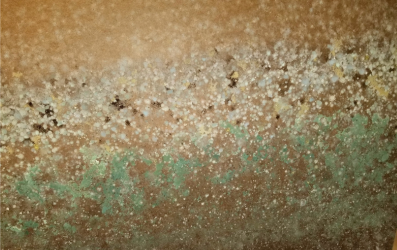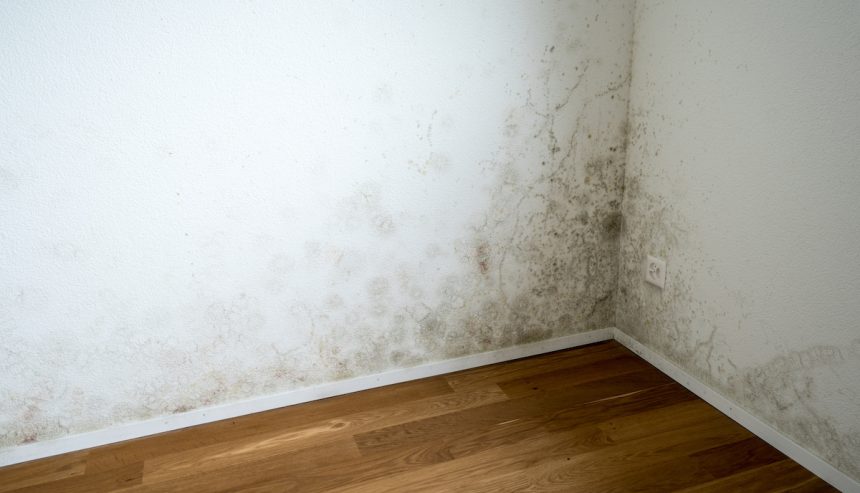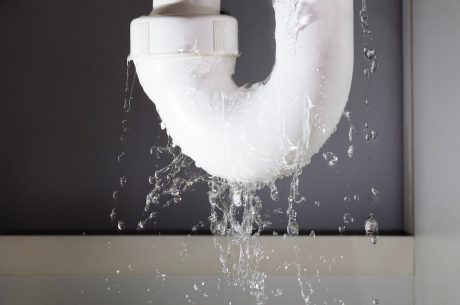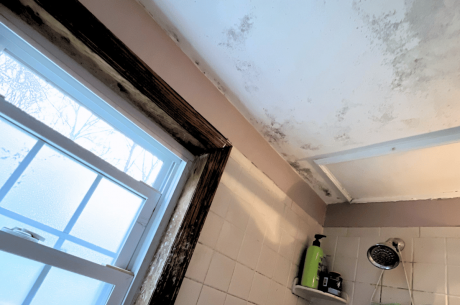
Mold and Mildew! These words strike fear into the hearts of homeowners everywhere.
Both mold and mildew are part of the natural environment, breaking down and consuming organic materials. However, when they end up in an unwanted place–like your home–they can cause health issues and property damage.
What Are Mold and Mildew and Why You Should Know the Difference
Mold and mildew are types of fungus, living organisms that aren’t plants or animals but distinct entities that eat organic material and reproduce by creating spores.
These two fungi share common features but differ in many ways. While both can appear on damp surfaces usually within 72 hours, mildew is flat and powdery, whereas mold is fuzzy, raised, and has a strong, musty smell.
Both fungi thrive in damp and humid areas but impact your health and home differently. Understanding these differences can help you manage and prevent problems effectively. Read on to learn more about what separates mold from mildew.
The Main Difference Between Mold and Mildew
While mold and mildew are both fungi, the basic difference is that mildew grows on living things and mold grows on what used to be living things. Mold really gets into a structure and destroys it from the inside. And that musty smell? That’s mold off-gassing as it digests materials.

Mold also comes in a variety of colors, including black, yellow, magenta, brown, green, or white, distinguishing it from mildew, which may begin as white and then turn brown or gray.
Mildew is flat and powdery in appearance and grows mostly on surfaces of living organisms like plants and trees. Mold is fuzzy in appearance and can grow on organic substances like sheetrock walls, paneling, wooden flooring, trim, attics and bathroom ceilings and dirt and soap scum in the shower.

Mildew and Mold Growth
Molds grow by producing tiny spores. These microscopic spores can float in the air and can travel great distances, or if inside a house, from room to room. It is crucial to avoid spreading spores by using fresh sponges and clean water during cleaning.
Mold and mildew can grow in any humid and damp area, both indoors and outdoors. Mold on a bathroom ceiling could be an example.
These fungi require an organic food source, like drywall, wood, plants, or soil, to grow and thrive. To discourage the growth of mold and mildew, keep your home dry and well-ventilated.
Mold can grow on any organic surface in a home. Given enough time, mold can cause materials to rot and destroy the structural components of a home. Mildew grows mainly on plants and can kill them if not removed in time.
What Mold and Mildew Look Like
Mildew usually grows in a flat pattern and appears as white, gray, or yellowish patches, turning black or brown over time. Mildew has a powdery or downy texture, with downy mildew starting as yellow and turning to brownish yellow. Powdery mildew starts as white and matures to yellow and black.
Mold appears as irregularly shaped spots in various colors: blue, green, yellow, brown, gray, black, or white. It can also be fuzzy or slimy.
Symptoms of Mold Exposure
Exposure to mold can lead to health issues, ranging from allergies (sneezing, itchy eyes, runny nose, coughing, wheezing, throat irritation, rashes, etc.) to more serious respiratory problems (difficulty breathing, coughing, asthma attacks), heart problems, migraines, and even depression.
Mold is often associated with a strong, musty smell, especially in closed areas without air circulation. Mildew exposure, while generally less severe, can still cause coughing, headaches, sore throat, and respiratory problems.
Benefits of Mold and Mildew
Despite its negative aspects, some molds are beneficial. Mold plays a part in breaking down organic matter, eventually returning essential nutrients to the soil. It can also break down some environmental pollutants and help clean up contaminated sites.
Penicillium mold is used to make antibiotics and blue cheeses like Roquefort and Gorgonzola. Another mold, Aspergillus oryzae, is crucial in the fermentation process for soy sauce and sake.
While the benefits of mildew are lesser known, mildew also plays a part in decomposition and nutrient recycling. Also, the presence of mold can indicate an environmental issue like high humidity.
Preventing Mold and Mildew
Maintaining a dry environment is crucial to preventing the growth of mold and mildew. Repair any leaks in your home promptly, as they create ideal conditions for fungi to thrive. Use a dehumidifier to keep humidity levels between 35-55% and ensure proper ventilation in all areas, especially those prone to moisture buildup.
Also, remember to monitor and balance the humidity levels in your basement since this is a common area for mold and mildew growth.
How to Remove Mold and Mildew
Removing mold and mildew yourself can be challenging and potentially harmful to your health. For small infected areas – less than 10 square feet – on surfaces like walls, you can try scrubbing the mold with an antimicrobial solution that contains hydrogen peroxide.
However, if the moldy area is larger than 10 square feet, it’s best to call a professional mold removal service. These experts have the training, tools, and specialized equipment to effectively and safely remove mold, ensuring the health and safety of your home and family.
You can remove mildew on plants by gently wiping the leaves with a damp paper towel. After each wipe, freshen the paper towel. Replace the paper towel when all parts have touched the moldy surfaces, and cut off any leaves with visible mildew.
Cleaning mold effectively can be challenging and often requires professional intervention for deep-rooted infestations. If you have significant mold issues, seeking professional help to ensure thorough and safe removal is best.
What About Black Mold?
Black mold (Stachybotrys Chartarum) is infamous for its potential health risks. However, reactions to molds vary. Maintaining good indoor air quality is crucial regardless of mold type. Mildew commonly appears on shower walls, emphasizing the need for regular cleaning in high-moisture areas.
Professional Mold Removal and Remediation
If you’re dealing with a mold growth issue that seems beyond your control, PuroClean of Matawan is Ready to Help! We remove many types of mold, including black mold and other mold species. We proudly serve Matawan and our neighbors in nearby Monmouth County. Don’t wait. Call us at (732) 351-2442.
Sources:
Centers for Disease Control and Prevention (CDC) on mold and mildew
Environmental Protection Agency (EPA) on mold



